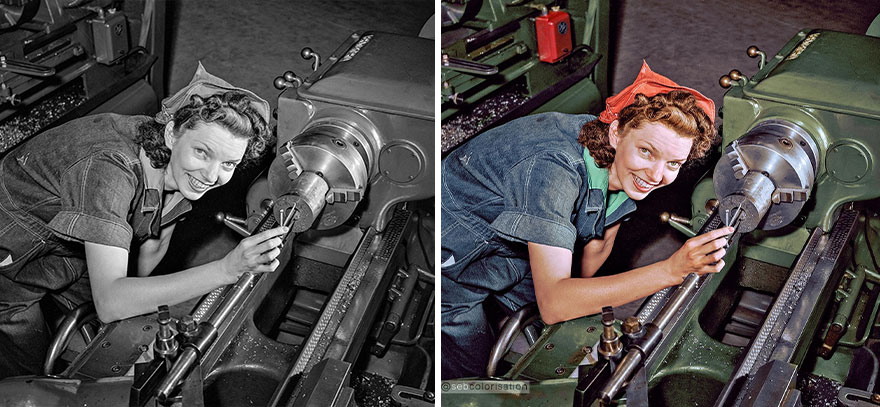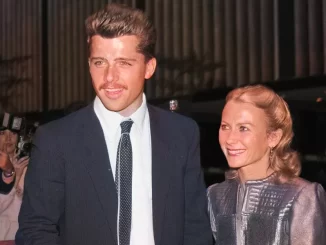It’s hard to imagine being limited to taking exclusively black and white photos. At the same time, B&W photography remains popular, and images without a full range of colors have their own unique character.
However, nothing is impossible nowadays, and even something like adding color to old photographs, if done properly, can completely change the look of the picture and our perception of what we’re looking at. The French artist Sebastien de Oliveira specializes in digitally colorizing vintage photos. We’ve already featured some of his earlier works as an illustrator and photographer, so check out our previous Bored Panda posts. Today, we’ve compiled the most recent selection of images Sebastien added some color to, so you can admire the before and after effects of his work.
Sergeant Franklin Williams, Home On Leave From Army Duty, With His Girlfriend Ellen Hardin, Splitting An Ice Cream, Baltimore, Maryland, March 1942

We reached out to Sebastien de Oliveira to ask him some questions about the old photographs and the fresh touch of color he adds to them. First, we were interested in the artist’s approach to AI and its ability to modify photographs in seconds. Sebastien told us: “For me, AI is still not satisfying for colorizing old photos. I don’t use it. I colorize like a painter, by hand, so I don’t need a machine to do it for me. It is a mistake to avoid thinking of colorization as a piece of art and not only a technical process. Give an image to ten different colorists, and they will give you ten different versions. I understand that it can be seen as a threat, but I think there will always be room for different techniques. The arrival of photography in the history of art didn’t make painting disappear; it made it evolve.”
Sebastien added: “I see my work as an adaptation of an original, so my choices are completely personal, a result of my references. My version and an AI version will always be two different things.”
Actress Sophia Loren, Rome, 1963

Activities At Camp Nathan Hale, Southfields, New York, August 1943

Asked which photographs he likes editing the most, the artist answered: “I love old photos from the 1930s to the 1950s, with a soft spot for the 1940s. The designs, the clothes, the overall atmosphere—all evoke a strong sense of nostalgia for me. The best way I’ve found to travel back in time is through colorization. I’m particularly drawn to simple street views and urban photographs, capturing people walking around, busy streets filled with cars—these are simple yet powerful images from the past that I adore.”
John Fitzgerald Kennedy And Jackie Kennedy In 1953

Marilyn Monroe Reading, Beverly Carlton Hotel Los Angeles, 1952

We were wondering how long it usually takes for Sebastien to finalize one image. We learned that: “It can take me anywhere from two to ten hours, depending on the complexity of the image. I need to select every single object by hand for my process, so it can be time-consuming. On average, it will take two to three hours, which isn’t too much. My work as a photo retoucher in the fashion industry has trained me to be fast.”
Teenage Girls And Boys Train For Defense Work Made Possible By TVA At A National Administration School. Knoxville, Tennessee, June 1942

James Dean And Elizabeth Taylor Taking A Break From Filming “Giant” In June 1955

The images colorized by Sebastien look very realistic, and very often it’s very hard to say they weren’t taken in color in the first place. We were curious what techniques the artist uses in order to create this seamless effect. We found out that: “My technique is not simple to explain in a few words. Let’s say that I observe a lot how the light works on objects—the reflections, the transparency, the temperature of the light—and all the different interactions between them, and I’ve found a technical way to reproduce them. The system involves colorizing not only each different object but also the different grays that compose each object. I also draw lessons from the impressionists and other painters who worked on the reproduction of light. Additionally, I take a lot of inspiration from old color photos from the past, such as the Autochromes of the Lumière brothers.”
Street View, July 1958

Pedestrians On Broadway Look Through A Restaurant Window To Watch A Cook Prepare A Pot Of Spaghetti. New York, 1937



